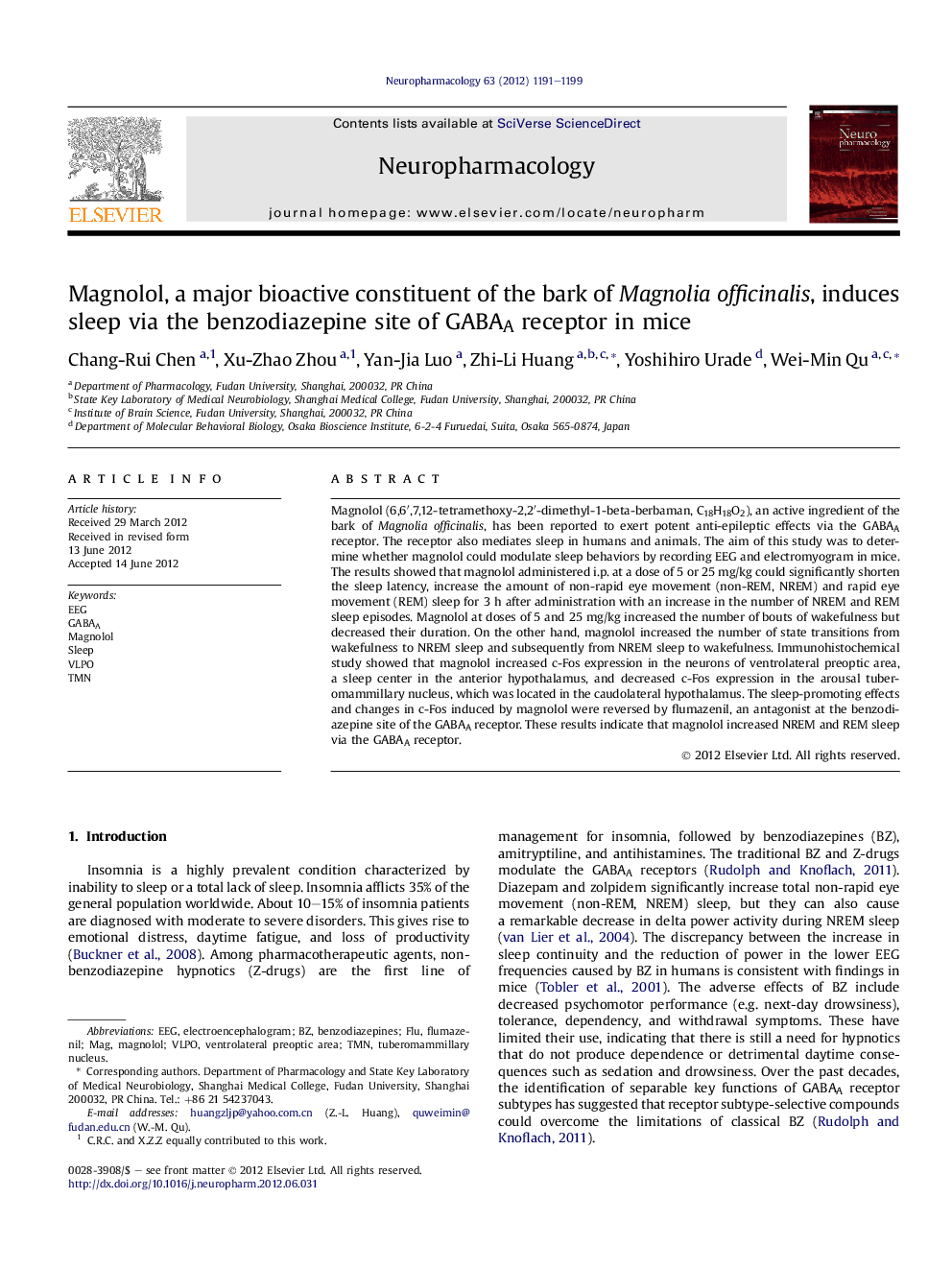| Article ID | Journal | Published Year | Pages | File Type |
|---|---|---|---|---|
| 5815694 | Neuropharmacology | 2012 | 9 Pages |
Magnolol (6,6â²,7,12-tetramethoxy-2,2â²-dimethyl-1-beta-berbaman, C18H18O2), an active ingredient of the bark of Magnolia officinalis, has been reported to exert potent anti-epileptic effects via the GABAA receptor. The receptor also mediates sleep in humans and animals. The aim of this study was to determine whether magnolol could modulate sleep behaviors by recording EEG and electromyogram in mice. The results showed that magnolol administered i.p. at a dose of 5 or 25Â mg/kg could significantly shorten the sleep latency, increase the amount of non-rapid eye movement (non-REM, NREM) and rapid eye movement (REM) sleep for 3Â h after administration with an increase in the number of NREM and REM sleep episodes. Magnolol at doses of 5 and 25Â mg/kg increased the number of bouts of wakefulness but decreased their duration. On the other hand, magnolol increased the number of state transitions from wakefulness to NREM sleep and subsequently from NREM sleep to wakefulness. Immunohistochemical study showed that magnolol increased c-Fos expression in the neurons of ventrolateral preoptic area, a sleep center in the anterior hypothalamus, and decreased c-Fos expression in the arousal tuberomammillary nucleus, which was located in the caudolateral hypothalamus. The sleep-promoting effects and changes in c-Fos induced by magnolol were reversed by flumazenil, an antagonist at the benzodiazepine site of the GABAA receptor. These results indicate that magnolol increased NREM and REM sleep via the GABAA receptor.
⺠Magnolol shortens the sleep latency, increases the amount of sleep in mice. ⺠Magnolol induces a form of NREM sleep very similar to physiological sleep. ⺠Magnolol promotes sleep via the benzodiazepine site of GABAA receptor.
